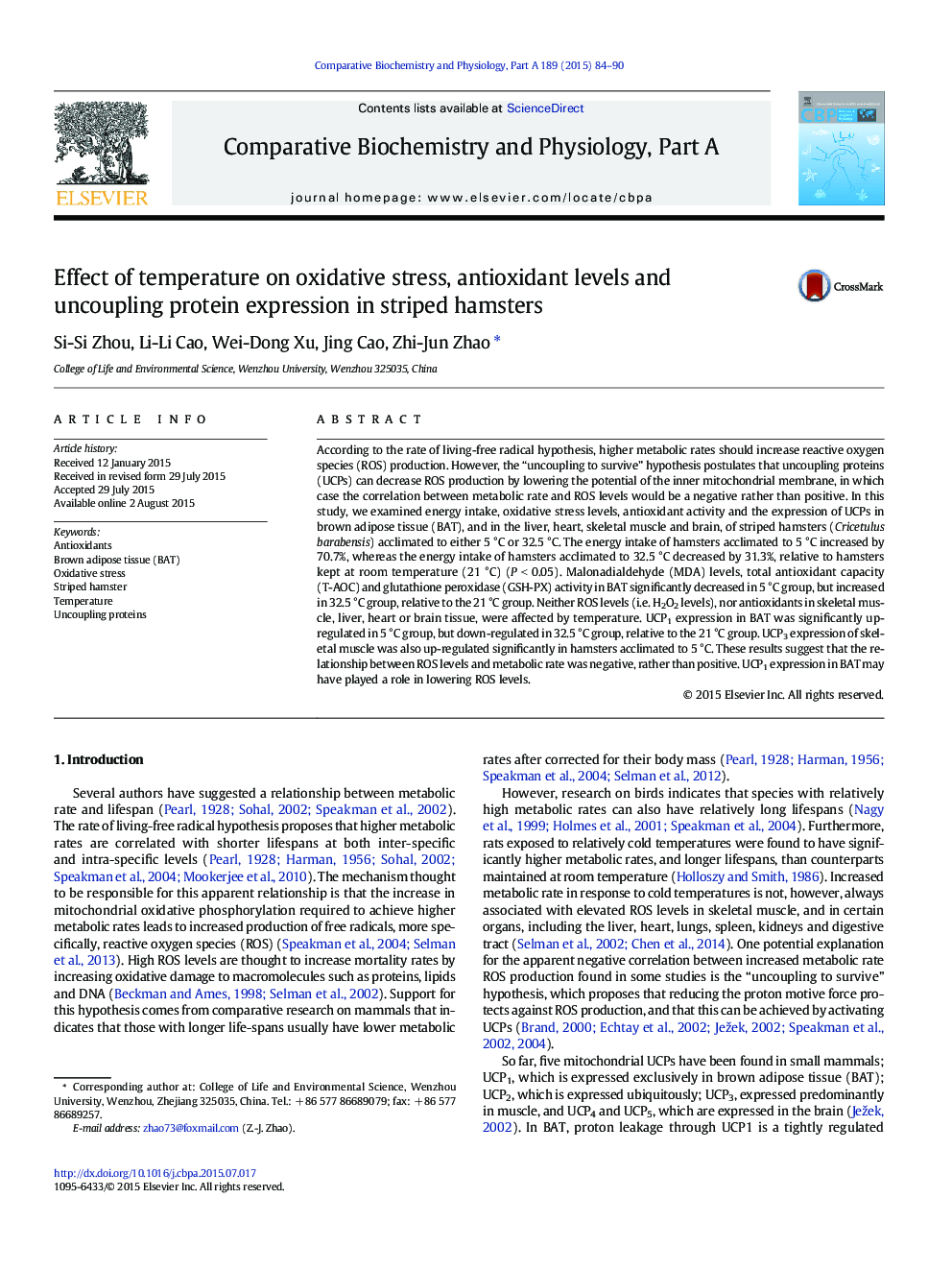| کد مقاله | کد نشریه | سال انتشار | مقاله انگلیسی | نسخه تمام متن |
|---|---|---|---|---|
| 1971941 | 1538998 | 2015 | 7 صفحه PDF | دانلود رایگان |
According to the rate of living-free radical hypothesis, higher metabolic rates should increase reactive oxygen species (ROS) production. However, the “uncoupling to survive” hypothesis postulates that uncoupling proteins (UCPs) can decrease ROS production by lowering the potential of the inner mitochondrial membrane, in which case the correlation between metabolic rate and ROS levels would be a negative rather than positive. In this study, we examined energy intake, oxidative stress levels, antioxidant activity and the expression of UCPs in brown adipose tissue (BAT), and in the liver, heart, skeletal muscle and brain, of striped hamsters (Cricetulus barabensis) acclimated to either 5 °C or 32.5 °C. The energy intake of hamsters acclimated to 5 °C increased by 70.7%, whereas the energy intake of hamsters acclimated to 32.5 °C decreased by 31.3%, relative to hamsters kept at room temperature (21 °C) (P < 0.05). Malonadialdehyde (MDA) levels, total antioxidant capacity (T-AOC) and glutathione peroxidase (GSH-PX) activity in BAT significantly decreased in 5 °C group, but increased in 32.5 °C group, relative to the 21 °C group. Neither ROS levels (i.e. H2O2 levels), nor antioxidants in skeletal muscle, liver, heart or brain tissue, were affected by temperature. UCP1 expression in BAT was significantly up-regulated in 5 °C group, but down-regulated in 32.5 °C group, relative to the 21 °C group. UCP3 expression of skeletal muscle was also up-regulated significantly in hamsters acclimated to 5 °C. These results suggest that the relationship between ROS levels and metabolic rate was negative, rather than positive. UCP1 expression in BAT may have played a role in lowering ROS levels.
Journal: Comparative Biochemistry and Physiology Part A: Molecular & Integrative Physiology - Volume 189, November 2015, Pages 84–90
